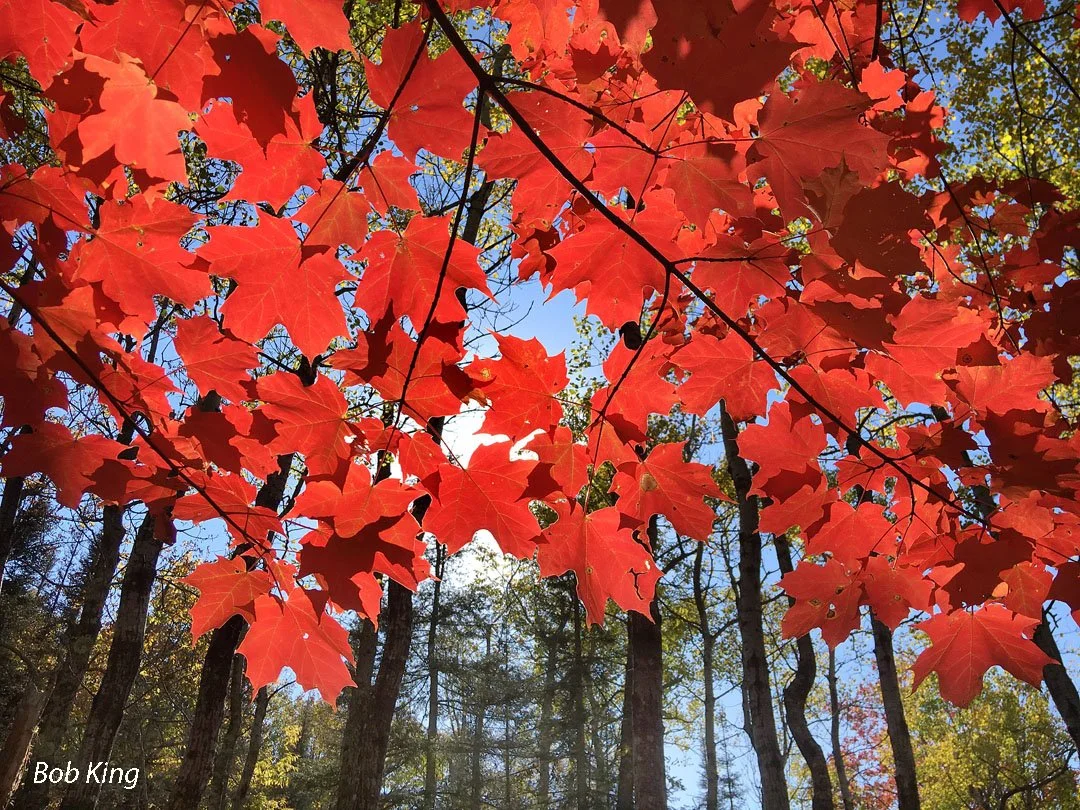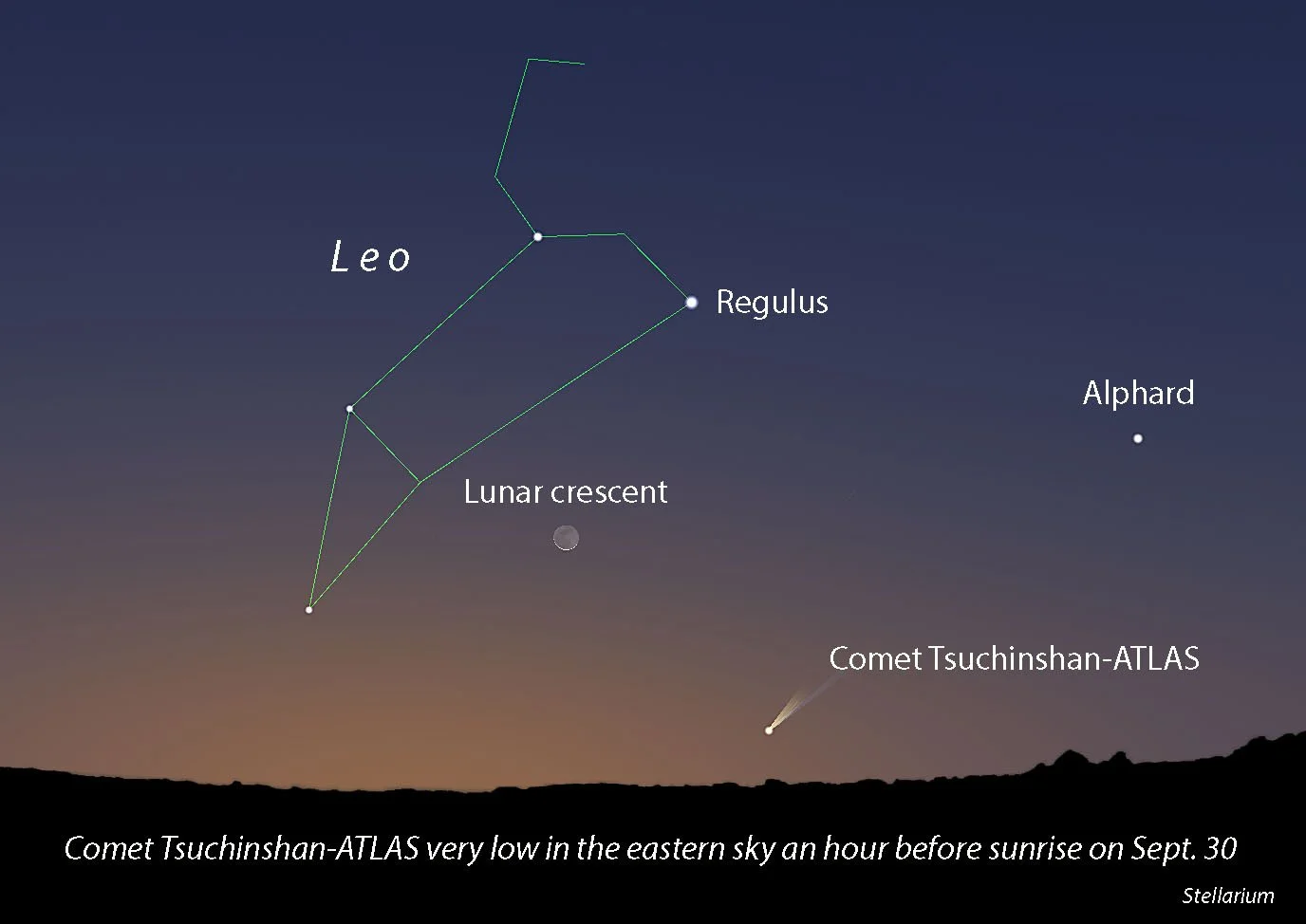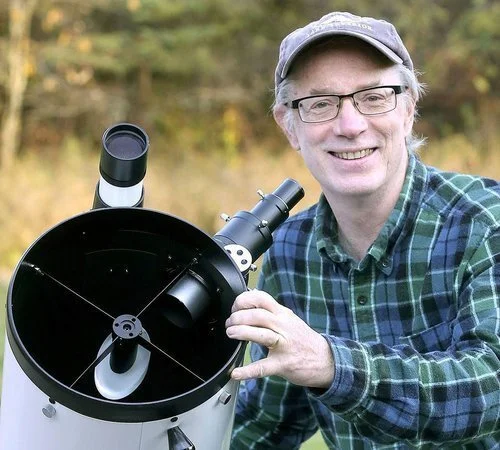Cool down and take it easy. The leaves are changing, night comes early and mosquitos have gone away. For northern hemisphere skywatchers September and October are probably the easiest, most relaxing months of the year to be out under the stars. The Milky Way and Summer Triangle asterism are still high in the sky and look stunning from the countryside. Venus huddles close to the sun low in the west 45 minutes after sundown, while Saturn rises around sunset and beckons from the southeastern sky around 9:30 p.m. local time.
Mars and Jupiter still adorn the morning sky, with Mercury joining the pair at dawn through mid-month. Jupiter nudges into the evening sky, rising in Taurus the Bull around midnight local time on September 1. By month’s end, it will clear the horizon at 10:30.
Highlights of the month include a partial lunar eclipse, Mercury’s best morning-sky appearance of the year, an occultation of the Pleiades star cluster by the moon and of course, the start of fall.
Our featured constellation this month is the brightest part of Pegasus the Flying Horse called the Great Square. It climbs up the eastern sky tilted on one corner, so it looks rather like a baseball diamond. Once you’ve found Saturn you can use it to find the figure. Ball your fist and hold it at arm’s length. Two fists to the planet’s upper left you’ll see two fainter stars nearly in line with Saturn. These define square’s western corners. Two additional stars to the left and parallel to them mark the other corners. We’ll use the Great Square as a stepping stone to help us find other fall constellations in the coming months.
Download the free Stellarium Mobile app for Android and iPhone to help you find and identify the planets and constellations. Do a Google search then install the app, set it in night mode (red screen) and point your phone skyward. For a free September sky map and calendar go to www.skymaps.com/downloads.html
Events (a.m. indicates the event happens in the morning sky):
September 1 (a.m.) – Charming conjunction of the wire-thin lunar crescent and planet Mercury low in the east-northeast sky an hour to 45 minutes before sunrise. The planet glimmers about 4 degrees to the moon’s lower right. Both will fit in the same binocular field of view, so if you can find the moon, you’ll spot the planet, too.
September 1-16 (a.m.) – Best morning appearance of Mercury this year. Look for the little planet during morning twilight low in the eastern sky. It gets brighter and brighter as mid-month approaches though loses altitude somewhat.
September 2 – New Moon
September 5 – Use binoculars to hunt for the thin crescent moon very low in the western sky starting about 20 minutes after sunset. A little more than one binocular field to its right look for the singularly bright planet Venus, which fights against the twilight glow.
September 8 – Saturn at opposition in Aquarius. It lies directly opposite the sun in the sky, rises around sunset and remains visible the whole night. The planet will be closest to the Earth for the year at “just” 804.7 million miles away and shine brightest. Its rings are nearly edgewise to us so they look more like a stick than a band.
September 9 (a.m.) – Mercury and Regulus, the brightest star in Leo the Lion, will park very close together this morning — just one moon-diameter apart. Look for the pair about an hour before sunrise. Should be an amazing sight in binoculars.
September 10-30 – The International Space Station (ISS) makes passes across the evening sky. It looks like a very bright star moving from west to east. For details, see Heavens-Above at heavens-above.com or check out NASA’s Spot the Station site at spotthestation.nasa.gov.
September 10 – First quarter moon. Stands in the southern sky at sunset and sets between 11-11:30 p.m. local time.
September 16 – Nearly full moon shines a short distance to the right of Saturn. The two will be about 5 degrees apart.
September 17 – Full Harvest Moon. Partial lunar eclipse tonight! The Earth’s shadow will take only a small bite, covering just 8 percent of the moon at most. The eclipse begins at 9:12 p.m. CDT and ends at 10:16 p.m. Greatest eclipse — when the maximum amount of the moon will be covered in shadow — occurs at 9:44 p.m. CDT; 10:44 p.m. Eastern; 8:44 p.m. Mountain and 7:44 p.m. Pacific.
September 22 – Autumnal equinox. First day of the fall season begins at 7:44 a.m. CDT. Day and night are approximately equal at 12 hours apiece around the globe. The sun rises due east and sets due west.
September 22 (a.m.) – Waning gibbous moon will cross over and cover up members of the Pleiades star cluster. The number of stars occulted depends on your location. For the Minneapolis region the first occultations occur around 5 a.m. local time. Use binoculars or a small telescope for the best view. For more details go to my Facebook page at www.facebook.com/astrobobking
September 24 (a.m.) – Last quarter moon. Rises around 11:30 p.m. and stands approximately due south at sunrise. It shines to the left of the bright planet Jupiter.
September 25 (a.m.) – Moon shines above the red planet Mars in the constellation Gemini this morning. They’ll be about 4 degrees apart.
September 25 – 30 (a.m.) – Chance to see Comet Tsuchinshan- ATLAS very low in the eastern sky at dawn. You’ll need a location with an unobstructed eastern horizon and pair of binoculars. The comet could be as bright as one of the stars in the Big Dipper, and display a tail. I’ll post more information on my Facebook page.
September 26 (a.m.) – Waning crescent moon appears just below Pollux, the brightest star in Gemini the Twins.
Bob King is an amateur astronomer, author, and passionate educator. He served as a photographer and photo editor at the Duluth News Tribune for 39 years and taught at the UMD planetarium. Bob’s work had a great impact on Voyageurs National Park. To achieve International Dark Sky Park certification, the park was required to host dark sky education events. Through the Night Sky Explorer webinars, the Conservancy was able to fulfill this component and help secure the certification for Voyageurs National Park. We can’t thank Bob King enough for sharing his talents and knowledge with the Conservancy community to support dark sky preservation.










